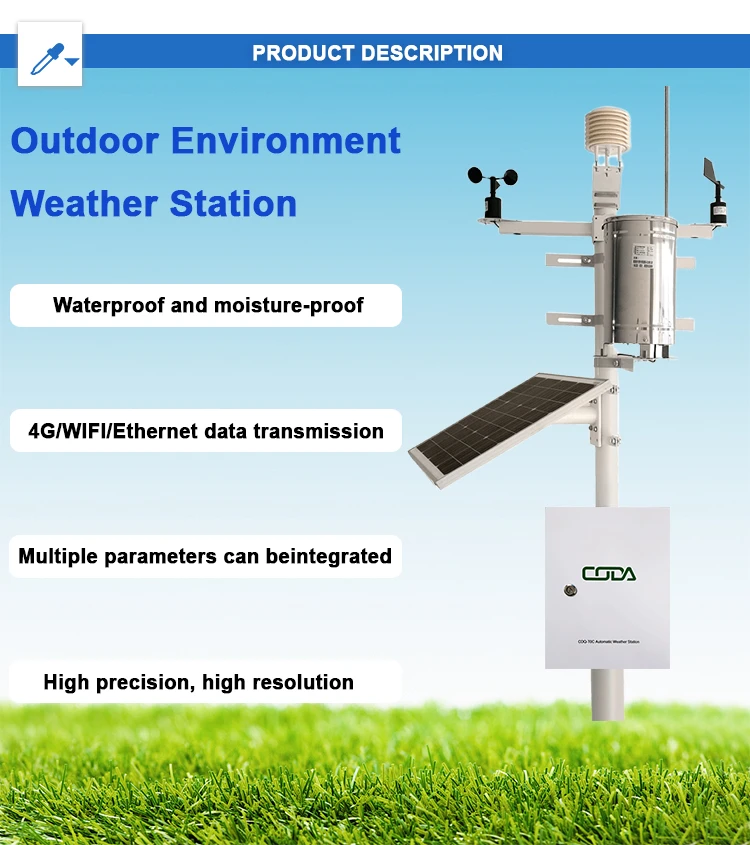
# Automatic Weather Station: Definition and Functionality
## What is an Automatic Weather Station?
An Automatic Weather Station (AWS) is a system designed to collect meteorological data without human intervention. These stations are equipped with various sensors that measure atmospheric conditions such as temperature, humidity, wind speed and direction, precipitation, solar radiation, and barometric pressure.
AWS units have become increasingly important in modern meteorology, agriculture, aviation, and environmental monitoring due to their ability to provide continuous, real-time data from remote locations.
## Key Components of an Automatic Weather Station
A typical automatic weather station consists of several essential components:
– Sensors: Specialized instruments that measure specific weather parameters
– Data logger: A device that records and stores measurements from the sensors
– Power supply: Usually solar panels with battery backup for continuous operation
– Communication system: Transmits collected data to central servers (may use cellular, satellite, or radio links)
– Mounting structure: Provides stable platform for sensors at appropriate heights
## How Automatic Weather Stations Work
The functionality of an AWS can be broken down into several key processes:
1. Data Collection: Sensors continuously monitor environmental conditions at predetermined intervals (often every 5-60 minutes).
2. Data Processing: The data logger converts sensor signals into digital values and performs basic quality checks.
3. Data Transmission: Processed information is sent to a central database via wireless communication.
4. Data Storage: Information is archived in databases for future analysis and reference.
5. Data Distribution: Weather data becomes available to meteorologists, researchers, and the public through various platforms.
## Applications of Automatic Weather Stations
Automatic weather stations serve numerous purposes across different sectors:
– Weather forecasting: Providing real-time data for more accurate predictions
– Agriculture: Helping farmers make informed irrigation and planting decisions
– Aviation: Ensuring flight safety with up-to-date weather information
– Climate research: Collecting long-term data for climate change studies
– Disaster warning: Detecting extreme weather events like hurricanes or floods
– Renewable energy: Optimizing wind and solar power generation
## Advantages of Automatic Weather Stations
Compared to traditional manual weather observations, AWS offer several benefits:
– Continuous operation: 24/7 data collection without human presence
– Remote monitoring: Can be installed in inaccessible or hazardous locations
– High temporal resolution: Frequent measurements (as often as every minute)
– Reduced human error: Automated systems minimize observational mistakes
– Cost-effective: Lower operational costs than manned stations over time
– Standardization: Consistent measurement techniques across locations
## Challenges and Considerations
While highly useful, automatic weather stations do present some challenges:
– Maintenance requirements: Sensors need regular calibration and cleaning
– Power reliability: Dependence on consistent power sources in remote areas
– Data quality control: Need for robust systems to detect and flag erroneous data
– Initial investment: Higher upfront costs compared to manual stations
– Environmental factors: Exposure to extreme conditions can affect performance
## Future Developments in AWS Technology
The field of automatic weather stations continues to evolve with technological advancements:
– Miniaturization: Smaller, more portable AWS units
– Improved sensors: Higher accuracy and lower power consumption
– Advanced communication: Faster data transmission with 5G and satellite networks
– AI integration: Machine learning for better data quality control and analysis
– Energy efficiency: Better power management for longer operation
– Multi-parameter sensors: Single devices capable of measuring multiple variables
As technology progresses, automatic weather stations will likely become even more sophisticated, reliable, and widespread, playing an increasingly vital role in our understanding of weather patterns and climate change.
Keyword: what is automatic weather station